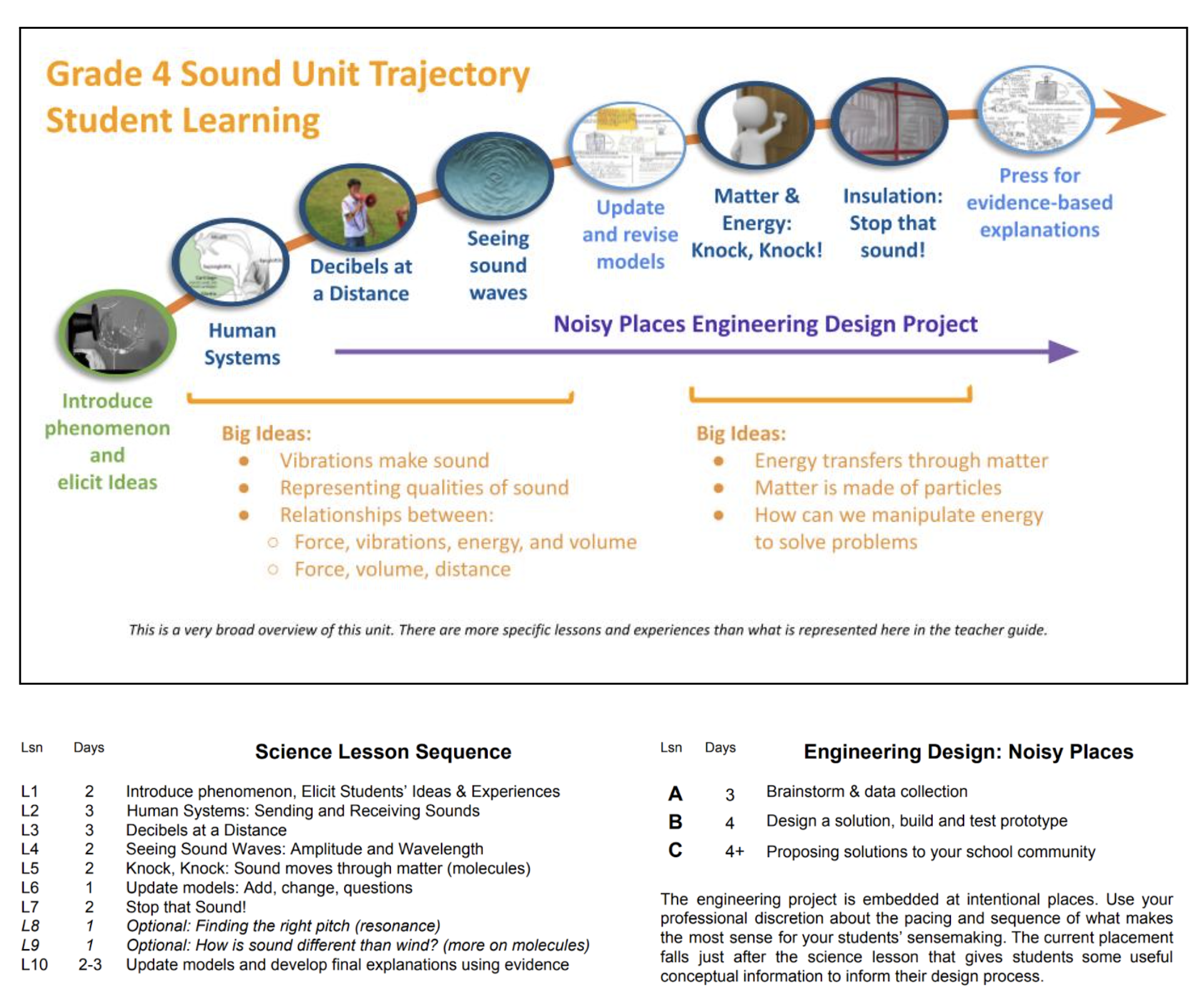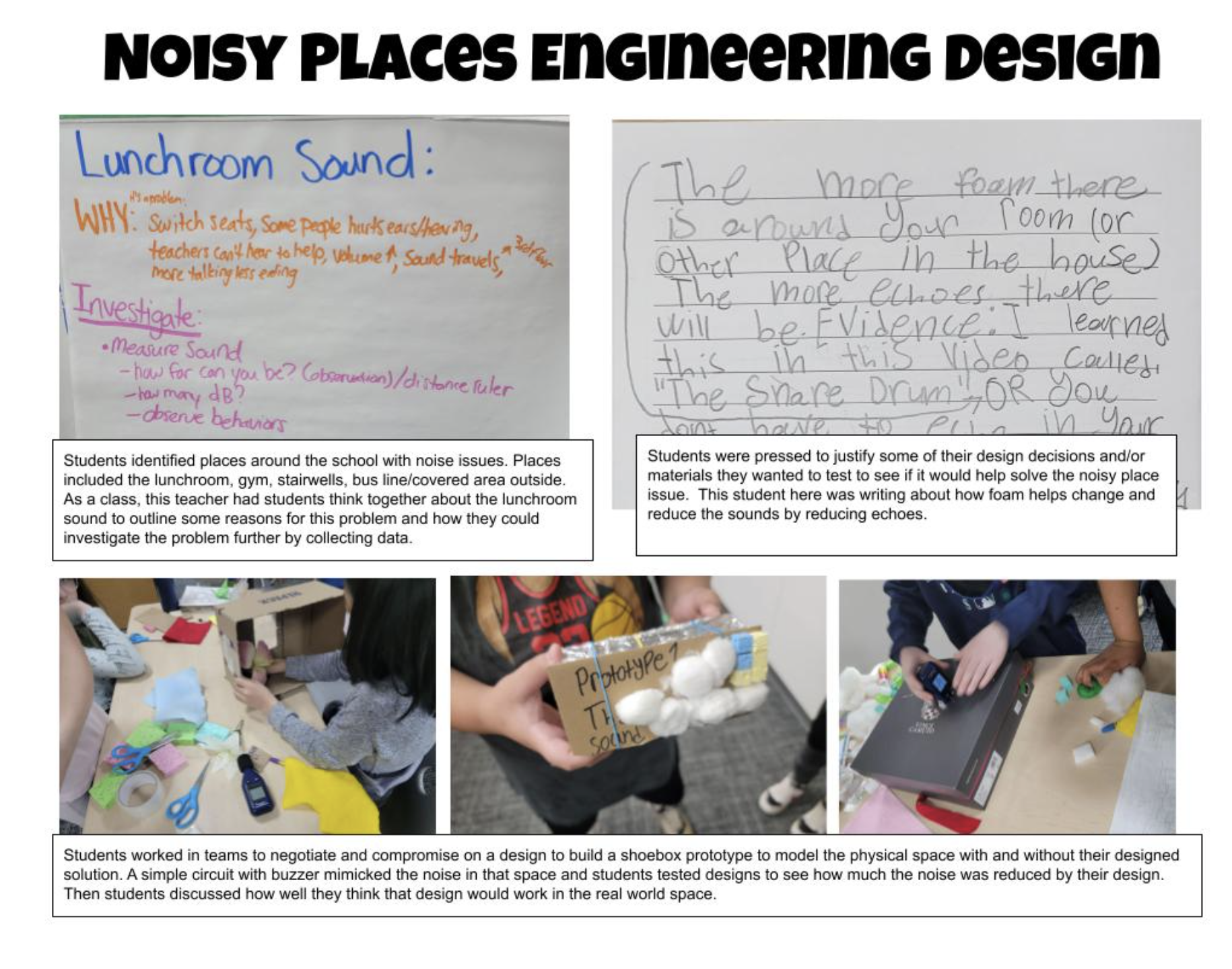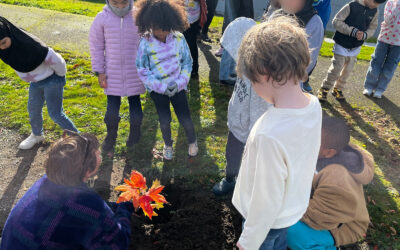Students learn how people make/detect sounds and the matter-energy story to explain how a singer shattered a glass. They identify noise problems in their community and design solutions to present to stakeholders. Students gather evidence to explain how a singer can shatter a glass with his voice, coordinating ideas about vibrations, pitch, volume, and energy to understand how sound travels and how people produce and detect sounds. They identify ‘Noisy Place’ problems in their school community and design/test prototypes of solutions to address the problems. Students apply what they learn to understand related phenomena relevant to their lives better (e.g., loud airplanes, how instruments work, or hearing loud sounds through walls).
University of Washington: Designing for Ambitious Science Teacher Leadership Across School Districts
https://www.youtube.com/watch?v=Pr1UMKXnJZA...







 This site is primarily funded by the National Science Foundation (NSF) through Award #1907471 and #1315995
This site is primarily funded by the National Science Foundation (NSF) through Award #1907471 and #1315995